#IIHS
When Will Automatic Braking Become Standard Equipment?
There was a time when seat belts were considered unnecessary, reserved as an optional extra for motorists who ventured out onto roadways in a state of white-knuckle fear. What pathetic bags of flesh, many thought, wrapping themselves in a polyester harness because they can’t handle themselves on the road — thinking it will save them from the reckoning of sheet metal and glass.
We know better now. Seat belts are proven life savers and advanced restraint systems are compulsory for both automakers and occupants. That will likely be the path of automatic emergency braking takes as well. Nissan announced Thursday it would make auto braking systems standard on a large portion of 2018 models sold in the United States. Toyota is doing the same. But the technology is not yet ubiquitous, nor has it acquired universal public approval. Many worry it could be too invasive or provide a false sense of invincibility, so it could be a while before AEB becomes expected equipment on all new models.
These Vehicles Offer the Highest Rates of Driver Death
After a notable decline in driver fatalities during the Great Recession, deaths are back on the rise. However, the increase is rather minuscule compared to every other decade since automobiles became North America’s preferred mode of transportation and the number is projected to go back down in the years to come.
The averaged rate of driver deaths for 2014 models was 30 fatalities per million registered vehicle years, up from the 2011 low of 28. Fatal crashes rose a further 7 percent in 2015. This is can primarily be attributed to people having more reasons to drive when the economy is better, and those added miles translate into additional opportunities for crashes.
More interestingly, however, is which vehicles drivers are losing their lives in most often. As expected, smaller vehicles often are the most dangerous to occupy in the event of an accident but the stats between individual models vary widely.
IIHS Pressing for Countermeasures Against Horrific Underride Scenarios
In National Lampoon’s Christmas Vacation, Clark W. Griswold road rages his Ford Taurus station wagon under a logging truck to comedic effect. However, without the benefit of movie magic, the following sequence of that film should have been a joint funeral for the entire family. Crash tests conducted by the Insurance Institute for Highway Safety prove that underride accidents are as devastating as they look, and the IIHS is demanding the implementation of every safety solution available.
While tractor-trailers are legally obligated to affix underride guards to the rear of their vehicles, the same can’t be said for their flanks. Unsurprisingly, there are more passenger fatalities stemming from incidents where a vehicle strikes the side of tractor-trailer than those where it impacts the rear. Since rear underride guards have proven successful in the lab and on the highways, isn’t it time we utilized similar countermeasures for a truck’s haunches?
IIHS Wants Your Teen Driver Behind the Wheel of These Square Used Vehicles
If you’re planning to buy your teen son or daughter their first vehicle — rather than let them work a retail job to save up for a rusting heap — the Insurance Institute for Highway Safety wants a word.
There’s good and almost-as-good choices for used cars out there, and none of them are a ’95 Cavalier with a blown suspension and more fluid leaks than the Bismark. While the IIHS top picks pack piece of mind for parents, kids might cringe at the less-than-sexy choices.
IIHS Announces Award for Not Decapitating Drivers With a Tractor Trailer
The next time you’re driving behind a semitrailer take notice of that metal bumper hanging off the back. That’s the underride guard, and its job it to prevent your minuscule hatchback from hurdling beneath its hulking mass on the off chance that you have a collision.
Sadly, not all guards are created equal and some buckle during an accident — allowing the car’s passenger compartment to impact the rear of the trailer, frequently shearing off the part of the vehicle that your head occupies.
To further scare you out of tailgating trucks, the Insurance Institute for Highway Safety released a 2011 report stating that the majority of those guards would fail and that the National Highway Traffic Safety Administration’s minimum structural guidelines for underride bars was inadequate. While some manufacturers had begun installing stronger and safer guards, mainly to satisfy higher Canadian standards, the initial round of IIHS’ testing resulted in most underride guards failing in a 30-percent overlap test.
Piston Slap: Visibility Vs. Roof Crush Standards?
James writes:
Sajeev,
I’m a TTAC reader and longtime poster on LincolnsOnine. My question is: why has outward visibility gotten so much worse over the past two decades?
I’ve been driving Panthers for more than 20 years (’87 Town Car, ’89 TC, ’97 TC, ’04 TC, and now a ’08 MGM), and the visibility out of them is fantastic.
However, my wife has a 2011 Buick Lacrosse. Although we really like the car, there are several times where both of us have almost hit someone or something by the huge obstruction of the A-pillar. I’ve noticed this in other newer cars I’ve driven as well. Am I missing something?
James
Tesla Misses IIHS Top Safety Pick Award While Chevrolet and Toyota Score
Tech-obsessed and financially stable Americans have an almost fanatical devotion to Tesla’s Model S. The model was deemed “Most Loved” by the Consumer Love Index two years in a row and the Tesla brand currently sits atop Consumer Report’s Owner Satisfaction Rankings.
One place it hasn’t received top marks, however, is in the Insurance Institute for Highway Safety’s recent evaluation of electrified vehicles. The Model S failed to earn the coveted Top Safety Pick+ designation, losing out to the Chevrolet Volt and Toyota Prius.
During the trials, the renowned Tesla only managed an “acceptable” rating in the challenging small overlap test, which simulates crashing into an overpass support beam or telephone pole.
Pesky Small Overlap Crash Test Sinks Another One
The Insurance Institute for Highway Safety’s small overlap crash test — the bane of every automaker’s existence — has prevented another pickup from achieving high marks.
This time, it’s the 2017 Nissan Titan — a full-size pickup struggling to stand apart from its domestic competition after recently undergoing its first redesign in 13 years.
In IIHS testing, the Titan crew cab, like many of its rivals, folded under pressure during the small overlap test. That keeps the truck out of the running for an ad-worthy Top Safety Pick rating.
Crummy Headlights Decimated the IIHS Top Safety Pick List
Things became grim the moment the Insurance Institute for Highway Safety added headlight performance to its testing regimen. An initial report on midsize cars came back with only a single vehicle receiving a good score, and IIHS wasn’t any kinder toward SUVs or pickup trucks. The general consensus seemed to be that most headlights are absolutely terrible at providing adequate visibility but great at blinding oncoming traffic.
Adding headlight effectiveness to the ratings criteria for the IIHS’s Top Safety Pick+ designation ended up cutting the previous year’s list practically in half. Down from 79, only 38 models received the safety plus appointment under the new measurements.
The Only Pickup With Good Headlight Visibility is the One You Didn't Buy
Hoping to shed some light on the effectiveness of modern crash avoidance technology, the Insurance Institute for Highway Safety has spent much of this year evaluating the quality of headlights in late model vehicles.
Its research has shown that most midsize cars could use some serious refinement and small SUVs are downright abysmal in terms of road illumination. So, it may not shock you to hear that most pickup trucks did poorly in those same tests.
In fact, there was only a single model that received a good rating, and you probably don’t know anybody who drives one.
Is This What a Five-Star Safety Rating Looks Like?
Once again, the National Highway Traffic Safety Administration has handed the Dodge Challenger a five-star safety rating in its annual crash tests.
Shelf space at Fiat Chrysler Automobiles headquarters must be at a premium thanks to all those awards, but does the NHTSA safety rating tell the whole story?
In short — no, it doesn’t.
Here's the Modern Safety Feature Motorists Hate the Most
Passenger vehicles have never been safer, with a bevy of high-tech aids available to keep nervous motorists safe, and feeling safe.
For the most part, we enjoy these handy driver’s aids. After all, who wants to end up in hospital, or have their insurance company come collecting for an arm, a leg, and a few other pounds of flesh? However, one safety feature, found on an increasing number of new vehicles, has all the popularity of Chrysler’s grating Electronic Voice Alert of the 1980s.
Almost All Small SUV Headlights Are Bad, None Are Good: IIHS
Compact SUV headlights have a long way to go if they want a passing grade from the Insurance Institute for Highway Safety.
The organization now rates headlight performance, and ] small SUVs are the latest crop of vehicles to undergo testing. The study results aren’t dazzling.
Out of 21 vehicles and 47 headlight options, no small SUV received a “good” rating from the IIHS, and two-thirds garnered a “poor” rating. Only four vehicles — the 2017 Ford Escape, Honda CR-V, Hyundai Tucson and Mazda CX-3 — earned a rating of “acceptable.”
Passengers Aren't Getting the Same Protection as Drivers; IIHS Threatens Another Crash Category
After reports surfaced last year of automakers only adding driver’s side small-overlap crash protection to their vehicles, the Insurance Institute for Highway Safety put the claims to the test.
A study of seven compact crossovers showed vast differences in safety between the driver and passenger side of the vehicle during small-overlap crashes, Automotive News reports, prompting the IIHS to consider adding another category to its testing criteria.
Dodge Challenger Nets Worst Score in Muscle Car Crash Tests
If you’re going to hit a pole in a Dodge Challenger, it’s better to nail that sucker head-on or it miss altogether.
That’s the takeaway from a series of crash tests performed by the Insurance Institute for Highway Safety, where Dodge’s muscle coupe scored itself a “marginal” rating in the small front overlap test.
The IIHS normally doesn’t test niche vehicles, but V8-powered Challenger, Ford Mustang and Chevrolet Camaro models are hot-selling items and buyers demanded it.






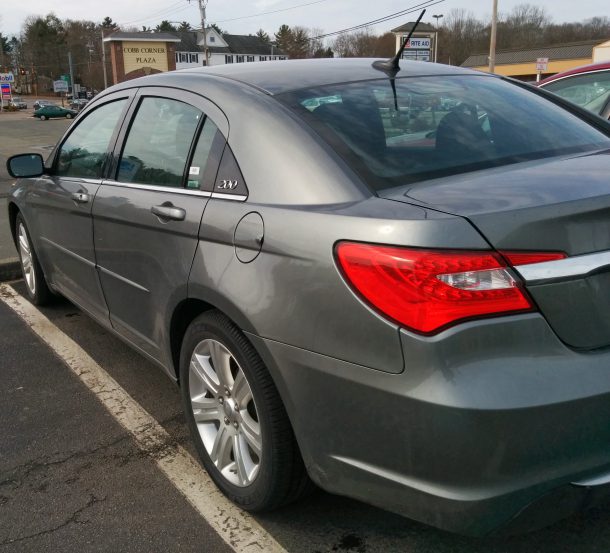
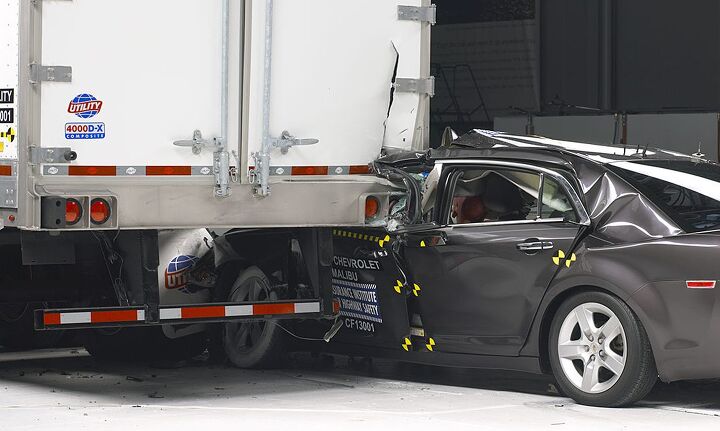
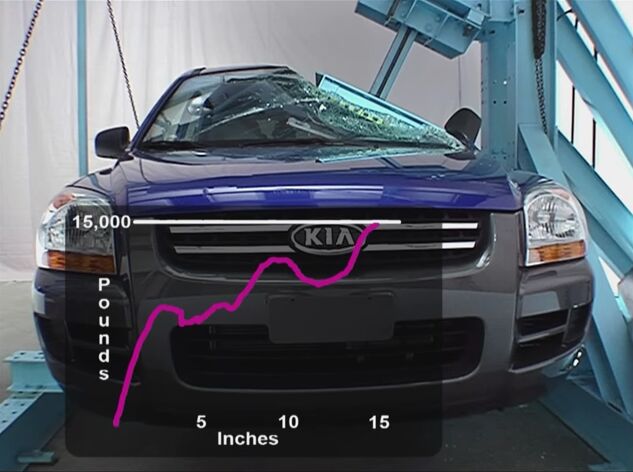







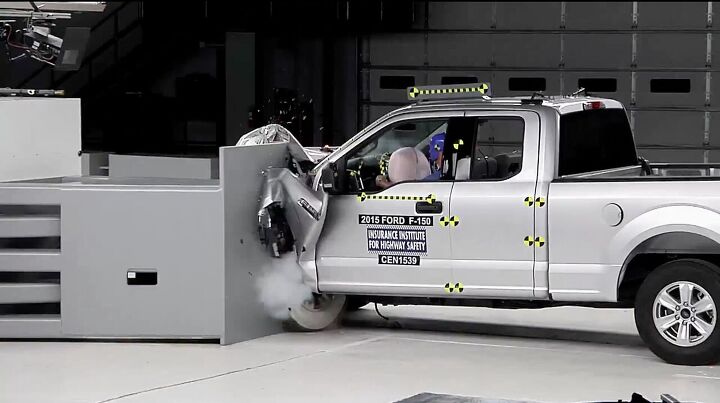
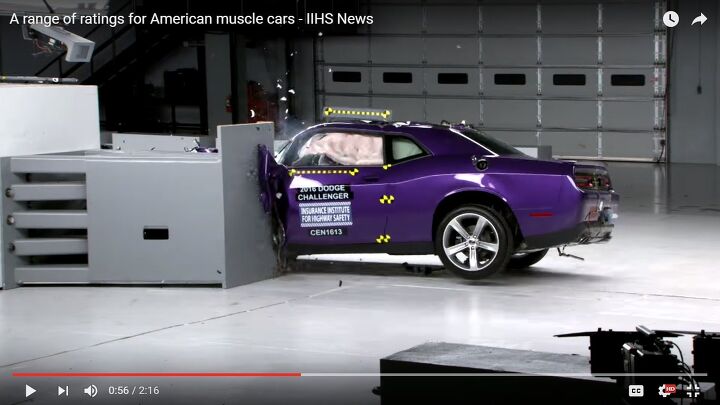












Recent Comments